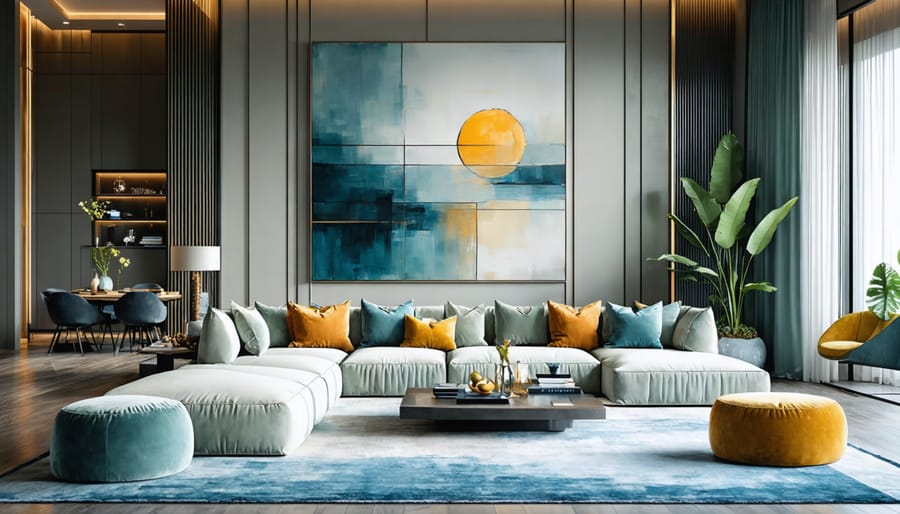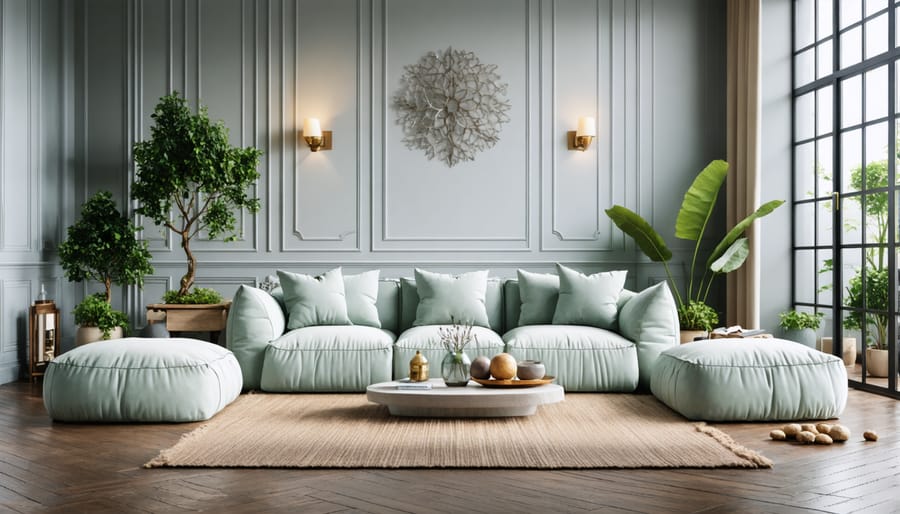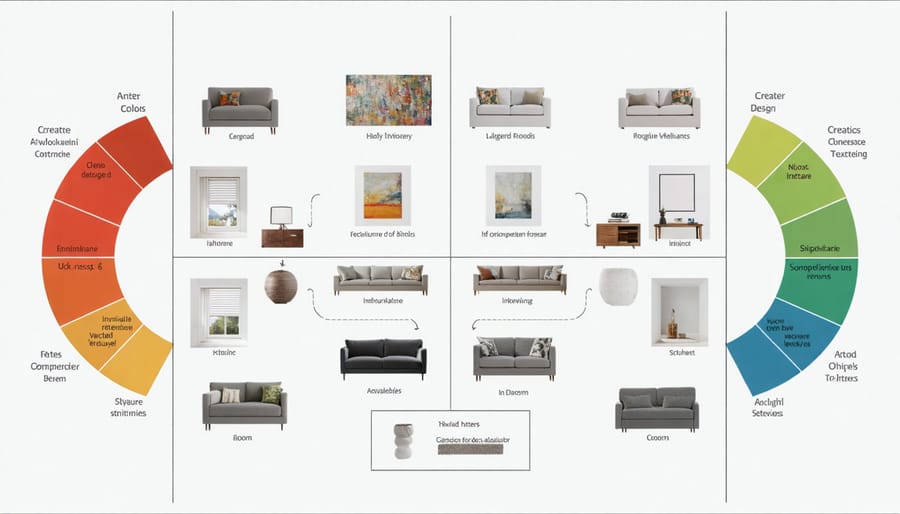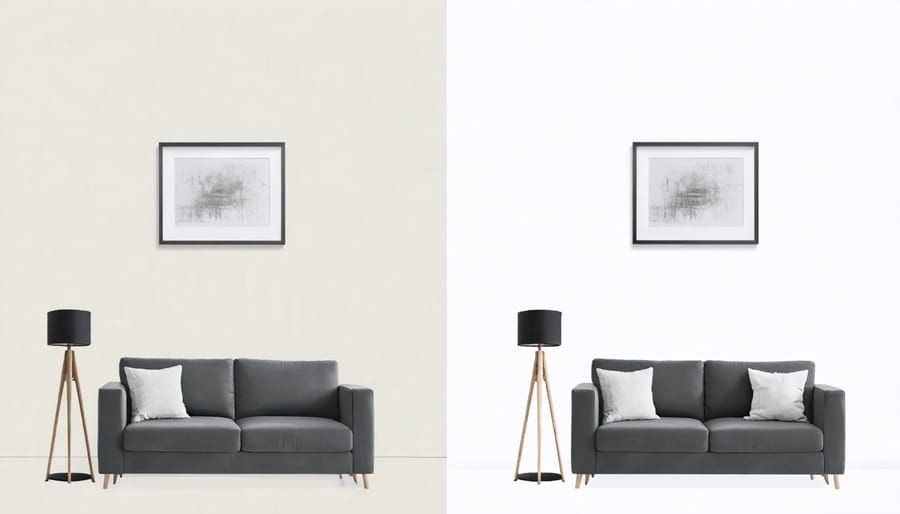
How to Create Perfect Harmony in Your Home: Interior Design Secrets That Work
Harmony in interior design transcends mere aesthetic appeal – it’s the fundamental principle that helps create balanced living spaces where every element works in perfect concert. This visual symphony emerges when colors, textures, patterns, and proportions unite to produce a sense of calm and cohesion throughout a room. Think of it as the invisible thread that connects your furniture, decor, and architectural elements, creating a space that feels naturally whole rather than artificially assembled. Whether you’re designing a cozy living room or a dynamic office space, understanding harmony allows you to craft environments that not only look stunning but also feel innately right to everyone who enters. By mastering this essential design principle, you’ll transform ordinary rooms into thoughtfully curated spaces that resonate with purpose and personality.
What is Harmony in Interior Design?
Balance and Proportion
Balance and proportion are fundamental principles of interior design that work together to create visual harmony in any space. Balance ensures that no single area feels too heavy or light, whether through symmetrical arrangements (mirror images on both sides) or asymmetrical designs (different elements that carry equal visual weight). Think of it like a seesaw – when properly balanced, it creates a sense of stability and calm.
Proportion relates to how elements relate to each other in size and scale. For example, a massive sectional sofa might overwhelm a tiny coffee table, while an appropriately sized table creates a pleasing relationship between pieces. When selecting furniture and décor, consider the room’s dimensions and ceiling height to maintain proper proportions. This attention to size relationships helps create a comfortable, welcoming atmosphere where everything feels like it belongs exactly where it is.

Unity and Flow
Unity and flow are fundamental aspects of harmonious interior design, working together to create spaces that feel naturally connected and purposeful. When rooms transition smoothly from one to another, they tell a cohesive story throughout your home. This can be achieved through consistent color schemes, repeated design elements, or complementary furniture styles across different spaces.
Think of your home as a journey, where each room naturally leads to the next without jarring transitions. For example, using similar flooring materials throughout connected spaces helps create visual continuity, while coordinated lighting fixtures can establish a unified design language. Even small details, like matching hardware finishes or consistent trim styles, contribute to this sense of flow.
To maintain unity without monotony, consider using variations of your chosen design elements rather than exact replicas. This approach creates interest while preserving the overall harmony of your space, making your home feel both polished and welcoming.
Key Elements of Harmonious Design

Color Coordination
Creating visual harmony through color coordination in interior design is essential for a balanced and pleasing space. The key lies in understanding the color wheel and how different hues interact with each other. Start by selecting a primary color that resonates with your space’s purpose, then build your palette using complementary, analogous, or triadic color schemes.
For a foolproof approach, follow the 60-30-10 rule: use your dominant color for 60% of the room (walls and large furniture), a secondary color for 30% (upholstery and curtains), and an accent color for 10% (accessories and artwork). This creates a natural flow and prevents any single color from overwhelming the space.
Consider the psychological impact of colors too. Warm tones like reds and yellows energize a space, while cool blues and greens promote relaxation. For a harmonious finish, use varying shades and tints of your chosen colors to add depth and interest without disrupting the overall balance. Remember that natural light affects how colors appear, so always test your palette at different times of day.
Texture and Pattern
Texture and pattern play vital roles in creating harmonious interior spaces. When balanced correctly, they add depth, interest, and visual rhythm to a room without overwhelming the senses. The key is to mix different textures thoughtfully – combine smooth with rough, shiny with matte, and soft with hard surfaces. For example, pair a plush velvet sofa with a sleek glass coffee table, or contrast rough stone walls with silky window treatments.
When incorporating patterns, follow the 60-30-10 rule: use your dominant pattern in about 60% of the space, a secondary pattern in 30%, and an accent pattern in 10%. This creates a balanced visual hierarchy that feels cohesive rather than chaotic. Remember to vary pattern scales – mix larger prints with medium and smaller ones while maintaining a common color palette or theme.
For optimal harmony, consider the room’s purpose and ensure your texture and pattern choices support the intended atmosphere and functionality.
Scale and Proportion
Scale and proportion work together as fundamental elements in creating harmonious interior spaces. Think of them as a balancing act – scale refers to how objects relate to the room size, while proportion deals with how items relate to each other. When selecting furniture and decor, consider your room’s dimensions carefully. A oversized sectional sofa might overwhelm a small living room, while tiny accent chairs could look out of place in a grand space.
To achieve perfect proportions, follow the classic 60-30-10 rule: use your dominant color or pattern for 60% of the room, secondary elements for 30%, and accent pieces for 10%. This creates a natural, pleasing balance. Pay attention to height variations too – mix tall and short elements to create visual interest without chaos. For example, pair a tall bookshelf with a medium-height console table and low ottomans to create a dynamic but harmonious arrangement.
The key is maintaining consistent relationships between elements while ensuring everything fits comfortably within your space.

Practical Tips for Achieving Harmony
Room-by-Room Application
Let’s explore how to create harmony in different rooms of your home, each with its unique purpose and atmosphere. In the living room, start by selecting a dominant color and incorporating complementary shades through furniture, artwork, and accessories. Maintain visual flow by repeating design elements, like using similar throw pillows on different seating pieces.
For bedrooms, focus on creating a peaceful environment by using a softer color palette and balanced furniture placement. Position your bed as the focal point, then add matching nightstands on either side for symmetry. Layer textures through bedding, curtains, and rugs while keeping patterns consistent.
Kitchens benefit from harmony through coordinated cabinetry, countertops, and backsplashes. Create rhythm by repeating hardware finishes and maintaining consistent spacing between elements. For open-concept spaces, use color transitions and complementary materials to connect different zones while maintaining their distinct functions.
In bathrooms, achieve harmony through matching fixture finishes and coordinated tile patterns. Consider using similar shapes throughout the space, from mirror frames to cabinet hardware. For home offices, balance functionality with aesthetics by coordinating desk accessories and storage solutions while maintaining a cohesive color scheme.
Remember to consider the transition between rooms, using connecting elements like consistent flooring or wall colors to create a seamless flow throughout your home. This room-by-room approach ensures each space feels complete while contributing to the overall harmony of your interior design.
Common Mistakes to Avoid
Creating harmony in interior design requires careful attention to detail, but even experienced designers can make mistakes that disrupt the overall balance. One common pitfall is overcrowding spaces with too many design elements, which can create visual chaos rather than peaceful harmony. Remember, sometimes less is more.
Another frequent mistake is ignoring scale and proportion. Placing oversized furniture in a small room or tiny pieces in a large space can immediately throw off the harmonious balance. Similarly, using too many competing patterns or colors can create visual tension instead of the desired peaceful flow.
Many people fall into the trap of following trends without considering their space’s natural architecture or existing elements. This disconnect can result in a design that feels forced rather than naturally harmonious. Additionally, poor lighting arrangements can undermine even the most well-thought-out harmonious design schemes.
Inconsistent styling across rooms is another common error. While each room can have its own character, there should be connecting elements that create a smooth transition between spaces. Neglecting the power of negative space is also problematic – every room needs breathing room to achieve true harmony.
Lastly, many overlook the importance of personal comfort in pursuit of perfect aesthetic harmony. Remember that true harmony in interior design balances visual appeal with practical functionality and personal comfort. Your space should not only look harmonious but feel harmonious to live in.
DIY Harmony Assessment
Want to evaluate the harmony in your space? Follow these simple steps to assess and improve your room’s overall balance and cohesion. Start by standing in the doorway of your room and take a quick photo – this helps you see the space with fresh eyes.
First, scan the room for color distribution. Are your chosen colors repeated throughout the space in a balanced way? Count the number of times each main color appears and ensure they’re spread evenly across the room.
Next, examine your furniture arrangement. Step back and draw imaginary lines between your larger pieces. Do they create a natural flow, or does the placement feel awkward? Your furniture should guide movement through the space while maintaining visual balance.
Look at your lighting levels. Is there a good mix of ambient, task, and accent lighting? Check for any harsh shadows or overly bright spots that might disrupt the room’s harmony. For more insights on how to perfect your lighting, consider exploring living room lighting ideas.
Assess your textures and patterns. Count how many different patterns you have and ensure they share at least one common color. For textures, aim for a mix of smooth, rough, and varied surfaces while keeping a consistent style throughout.
Finally, consider scale and proportion. Are your furniture pieces appropriately sized for the room? Nothing should feel overwhelmingly large or noticeably small compared to other elements.
Score each aspect from 1-5, with 5 being perfectly harmonious. Areas scoring below 3 need attention. Focus on these elements first when making improvements to create a more harmonious space.
Creating harmony in your interior space isn’t just about following design rules – it’s about crafting a living environment that feels naturally balanced and welcoming. By implementing the principles we’ve discussed, from coordinating colors and patterns to balancing visual weight and maintaining proper proportions, you can transform any room into a harmonious sanctuary. Remember that achieving harmony doesn’t mean everything needs to match perfectly; rather, it’s about creating thoughtful connections between elements that work together seamlessly. Start small by applying one principle at a time, and don’t be afraid to adjust as you go. Whether you’re redesigning your entire home or simply refreshing a single room, keeping harmony at the forefront of your design decisions will help you create spaces that not only look beautiful but feel inherently right and comfortable to live in.
